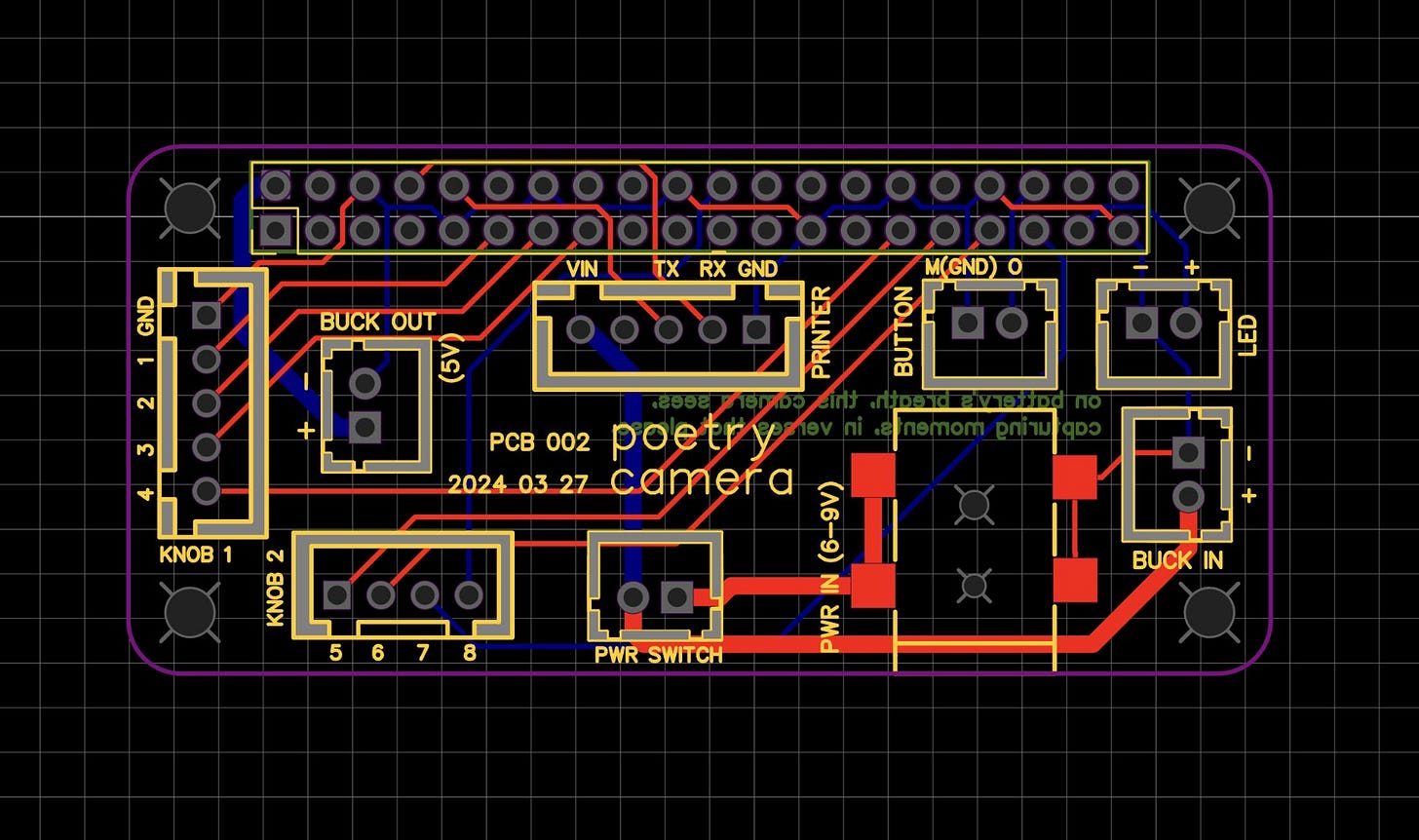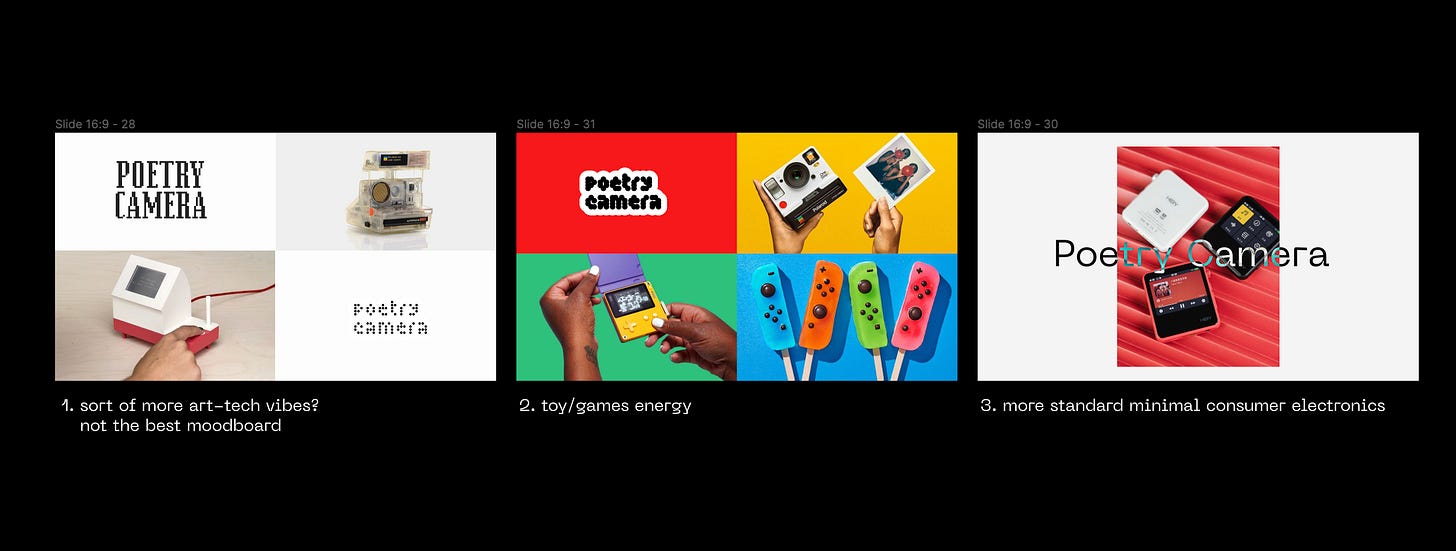💻 virtual event Wed Apr 3 // camera progress
monument lab talk; sva workshop; working batteries; our first buyer; our baby project is growing up
Virtual event, Wednesday April 3
We’re incredibly excited about our first virtual event for Poetry Camera! Uh, yes, it’s tomorrow 😅 Hosted by Monument Lab, a nonprofit public art and history studio in Philadelphia — but you can join from anywhere via Zoom.
We’ll be demoing the camera and share our perspective on how AI can encourage creativity, connection, and play. We’re looking forward to meeting our fellow speaker, poet Sasha Stiles, and hearing her perspective as well. Thank you to Monument Lab’s Senior Curator (and former Poet Laureate of Philadelphia) Yolanda Wisher for having us.
🗓️ Wednesday Apr 3, 6:30-8:00pm Eastern
📍 Zoom
👉 Details & RSVP here
SVA workshop & talk, Friday April 26
Another first, a Build-Your-Own-Poetry-Camera workshop for MFA Interaction Design students at the School of Visual Arts! We’ll be doing a 5-hour workshop with 15 students, then a wider talk open to the whole SVA community. If you’re part of the SVA community, look out for more information in the SVA Today newsletter.
This will be the first time that we’ll get to watch someone else build their own Poetry Camera. We’re excited to learn what excites them, what confuses them, how they want to program and customize it. I’m sure it will give us so many more ideas for future versions of the camera. Thanks so much to department chair Adriana Valdez Young for bringing us in.
Camera progress
It’s been a month since our last update. Every time I delay writing the newsletter — because there’s so much going on — enough stuff happens to fill a whole new newsletter. So here’s the Substack equivalent of a photo dump.
(What do you want to hear about in future newsletters? I love sharing process. Lmk so I can focus on what you’re interested in!)
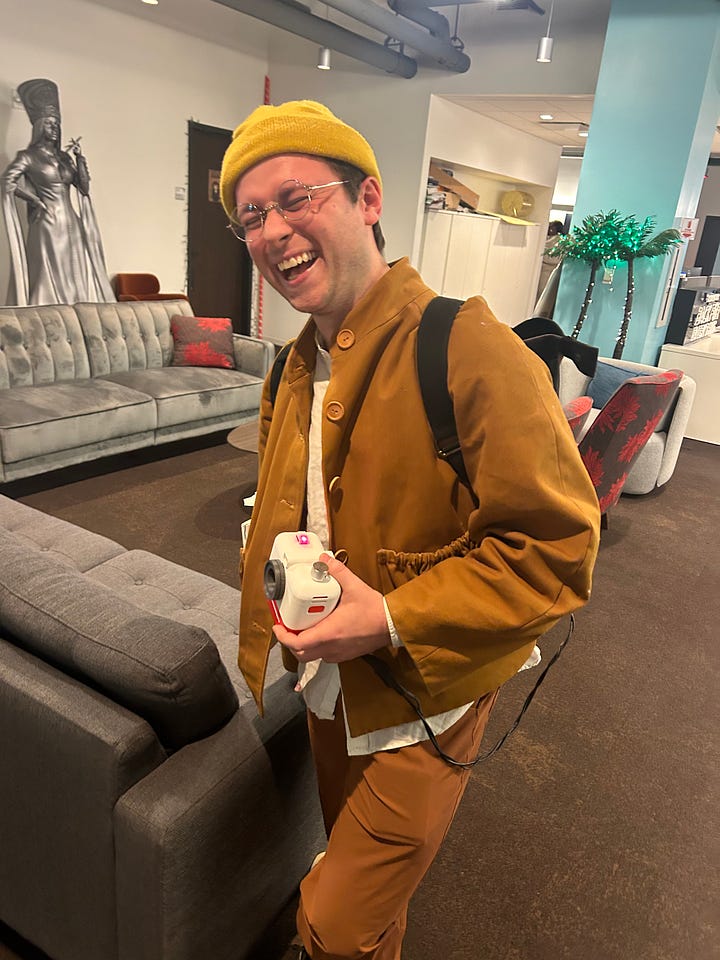
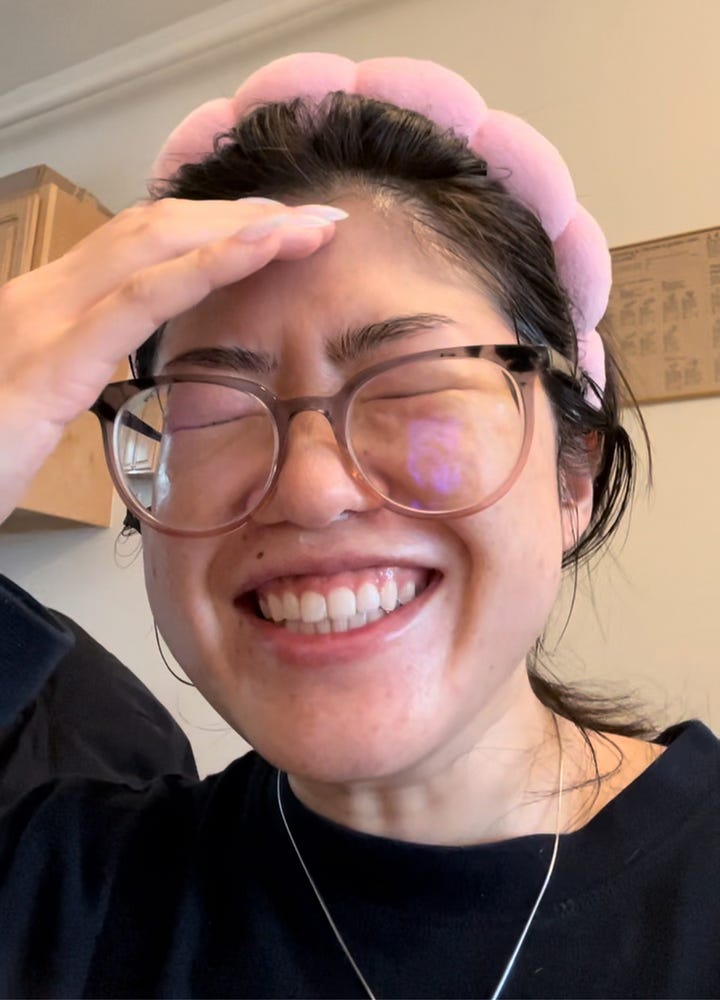
In this past month…
We demoed at an AI art show in NYC (Human-Assisted Art: Renaissance), a tech event where the demo failed (oops), and generally brought it around town and to casual gatherings.
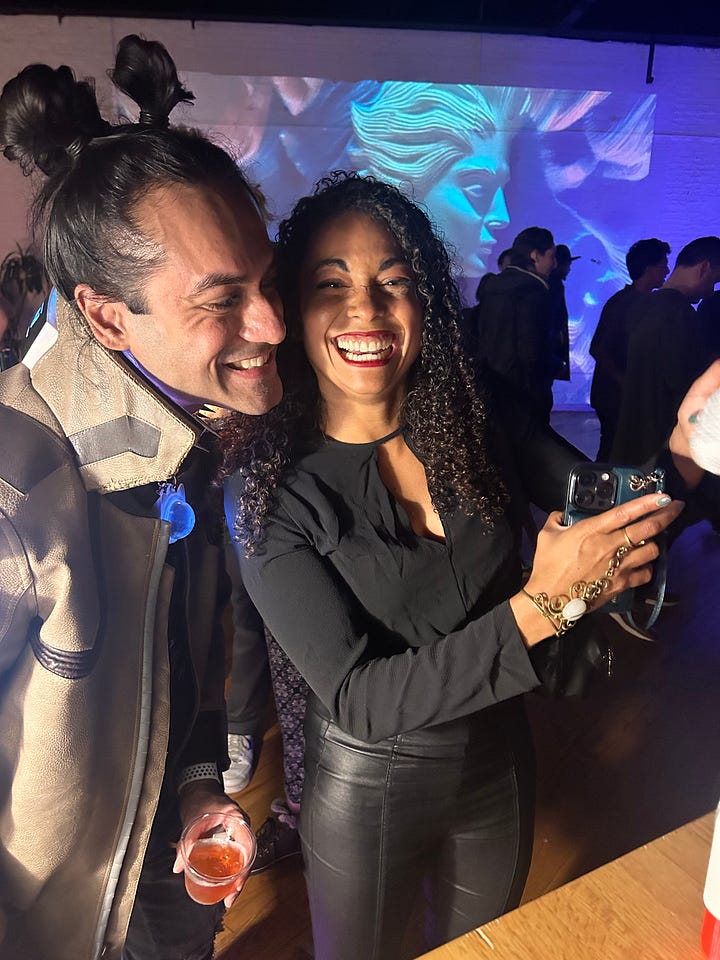
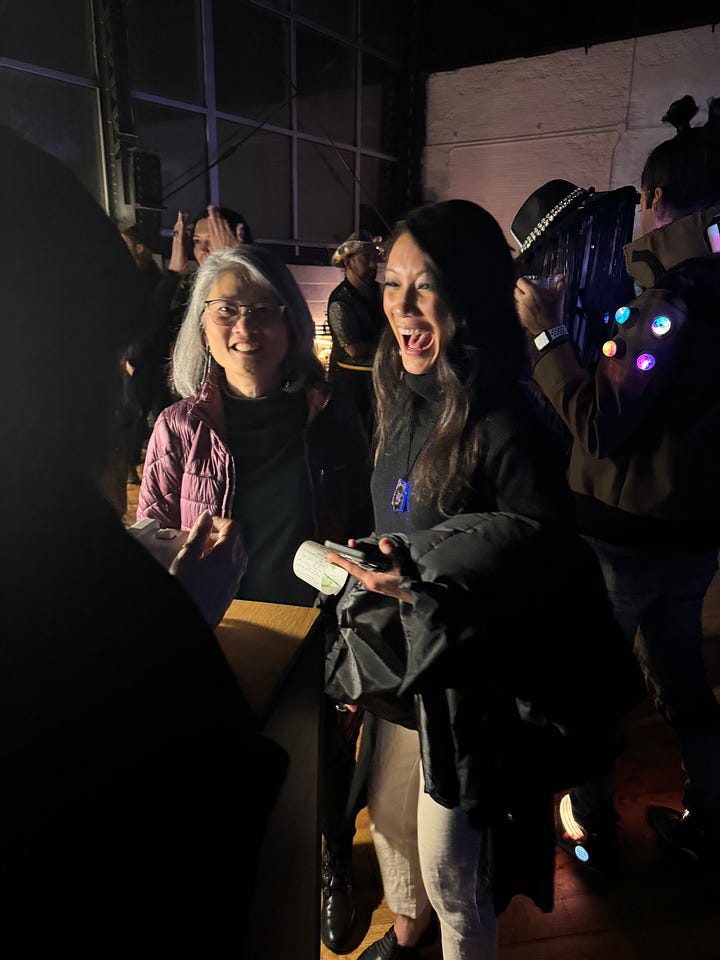
The HAA show was our first time having two cameras at once, which led to some fun and weird new issues. We realized that it’s tricky to debug two devices with identical software on the same wifi network!

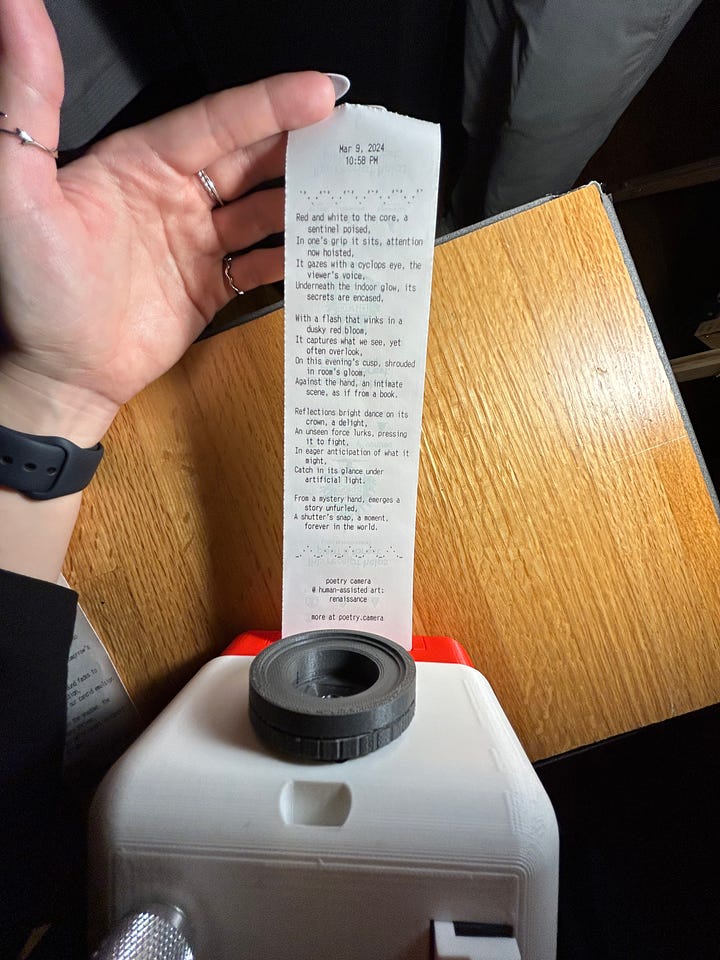
We made our first sale! To a buyer who wanted to support the project as it’s being developed. We weren’t even trying to sell anything yet since it’s still a prototype, but we feel lucky that this buyer is excited about being early and understands the beta nature of the camera. We’re also just lucky to have a customer to really test with real-world use, so we can make improvements based on their feedback. Also, we just thought they were cool. It all feels kind of surreal. More soon.
We improved the poem writing by changing up some models and prompts. We switched our image recognition to GPT-4 Vision, which we had delayed doing for a long time because we didn’t find any notable improvement in the output… for short poems. However, after some fiddling, we realized that long poems + GPT4V are really fun — there’s more opportunities to mention details from the scene, which makes the output feel even more unique to you. People now consistently say that the poems make them feel seen. In the last newsletter, we said the sonnets were boring because it was too long. Now, people keep coming back for the sonnets.
We started seriously looking into how to manufacture the camera — learning through meetings, books, articles, podcasts — so we can make it available in ways beyond a DIY kit. We’re focusing on assembling our own limited drops first, since manufacturing is a long, complicated, and ridiculously expensive process… but it really seems like an adventure.
We finally redesigned our power circuit to use a single battery power source, so we don’t need to haul around a giant power bank to plug into now. Previously, we’ve never been able to power both the Raspberry Pi and the printer with the same power source, since they have such different power requirements — the Pi requires a steady 5V power supply, while the printer has huge current draw while printing and works best at ~7-9V. Naive solutions to power Pi+printer using the same battery resulted in the Pi shutting down while printing because the printer hogged too much power, or vice-versa. Now, by using a higher-voltage battery (6xAA batteries, which provide 7-9V) with a step-down buck converter to lower the voltage for the Pi, we finally have a simple, safe, DIY-friendly battery solution that makes the camera so much more portable.

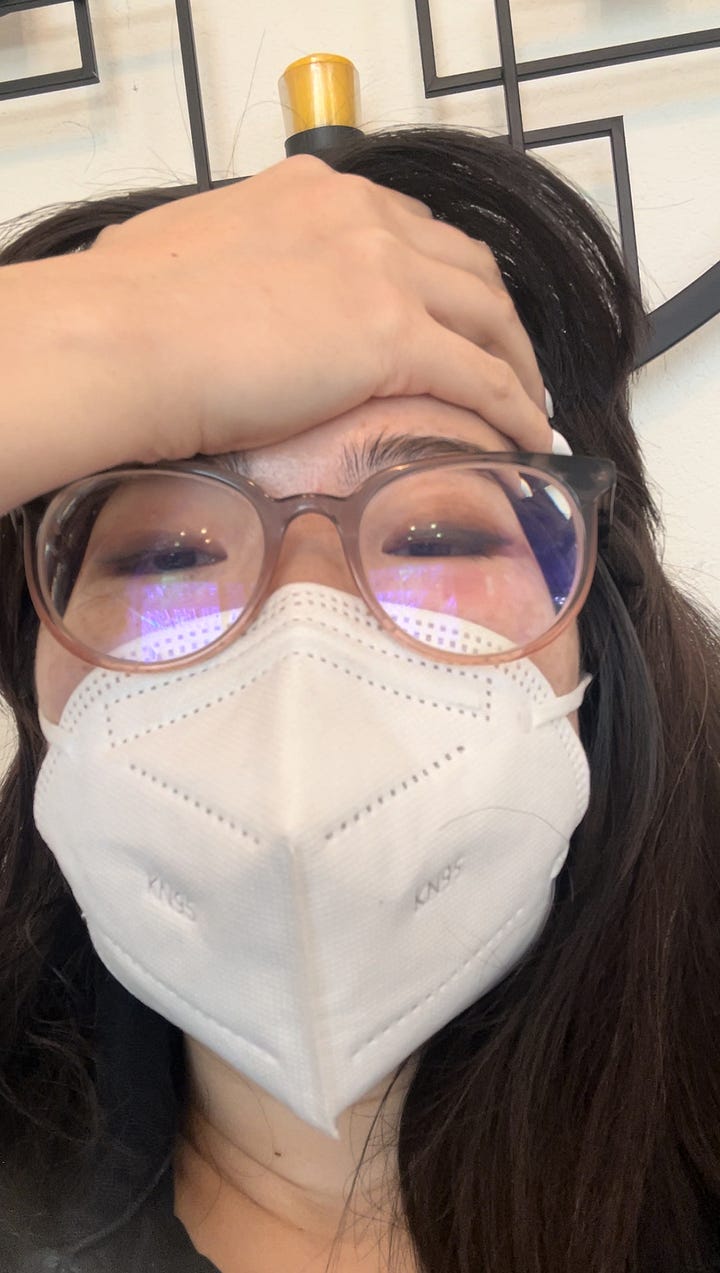
We tested our first PCB design, which we mentioned in our last newsletter. Not only was it the first Poetry Camera PCB, it was Kelin’s first PCB design ever. Miraculously, it worked on the first try! Now we’re gearing up for our second one, which supports our new power circuit.
We upgraded our look and feel in our assets and collateral, as we start putting together materials for partnerships and collabs. Not quite a full branding exercise, just easy changes to look more buttoned-up. (Our previous “brand” consisted of a camera roll photo cutout and a serious-looking typeface from Google Fonts that I threw together for a 2-hour website right before heading out to Washington Square Park to film some Tiktoks. Now I took some photos of the camera with my phone, against colored backdrops outdoors. I still haven’t updated the website, lol.)
We started preparing for our first workshop & talk mentioned above. It prompts all sorts of introspection — What’s our story? Why did we make this? What’s the bigger picture? What’s our unique perspective, and how does that show up in this project?
We made some more video content and set up proper standalone social media accounts for the project so people can tag when sharing on social. We’re @poetry.camera on Instagram & Tiktok now.
We got a shoutout from John Maeda in his 2024 Design in Tech Report. Thanks for the feature and check out the other projects too!
That’s all! See you next month, probably again rushing to post about an event happening the next day…







